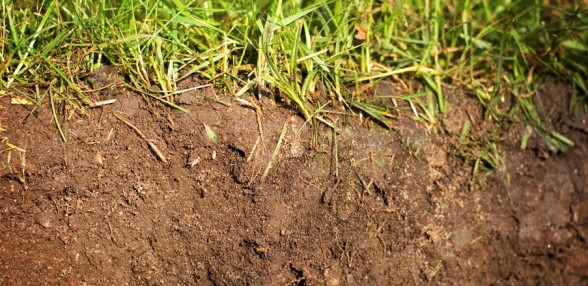Test Your Soil and Learn About Your Lawn

Test your Lawn’s soil
Finding out about the soil quality of your lawn can tell you why your lawn’s plants grow the way they do, as well as how to make your lawn healthier and more visually attractive. Below, you’ll learn three methods you can use to test your lawn’s soil yourself, and how to use the results you get to improve the look of your lawn.
Find Your Soil Type
The texture of your soil is a big factor in determining what will grow on your lawn and the types of treatment it is likely to need. To find out your soil type, the test is quite simple– just grab a handful of the soil on your lawn and compress it in your hand. You should get one of the following results.
- Sandy – Sandy soil will fail to stick to itself and scatter as you release your grip. Sandy soil is easily penetrated by both oxygen and air, which is generally great for plants, but does not allow many plants to put down firm enough roots. Wetting agents and organic mulch will be your friends if you are not looking for a lawn primarily inhabited by very hardy plants.
- Clay-based – If you have soil with high clay content, your handful of soil will stick together firmly and resist falling apart even when prodded at. Some particles in clay-based soil are excellent for plants, being full of important nutrients such as potassium, calcium and magnesium. However, other particles within this type of soil are incapable of absorbing nutrients. Organic mulch and cover crops will improve fertility and decrease erosion in clay-based soil.
- Loam – Loam sticks together initially but falls apart when prodded, and is the ideal soil type. If you have loam-type soil, your lawn is in likely high in nutrients with adequate air flow and drainage.
Check Drainage
How well your lawn drains water will tell you whether the roots of your plants are likely to go deep or remain shallow, and if your lawn is at risk for lawn diseases involving rot. To perform this test, dig a hole roughly 1 foot deep somewhere out of sight and fill it with water. Once the water is completely drained, fill the hole again and time how long it takes to drain a second time.
- Less Than 1 Hour – Your soil drains very rapidly, which may indicate that your soil is too loose for plants to send down strong roots. Mixing mulch with the soil can help thicken it and provide a better foundation for roots.
- Over an Hour – If your soil takes about an hour or more to drain, it has decent drainage and probably does not require special treatment in that department.
- Over 4 Hours – If your lawn takes four hours or more to drain, your soil is not draining properly and is probably too compact to allow plants to send roots as deep as they need to. Aeration treatment may be needed to loosen the soil and improve water drainage.
Test Soil pH
You can purchase a DIY pH test from your local garden store, or you can call the lawn experts at Green Lawn Fertilizing and have them perform one for you free of charge. A pH test will determine whether your soil is too acidic or too alkaline, which will help you determine what kind of fertilizer should be used on the lawn.
For aeration treatments, fertilization treatments, lawn disease treatments and more, call the local lawn care professionals at Green Lawn today.